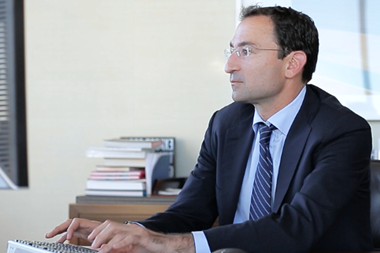Fresh political thinking on the state’s real estate is due to be published next month.

The Office of Government Property (OGP) heralded a “step change in government’s property ambitions” on 28 March when it promised to outline “the ambitious steps to be taken across the civil service to ensure the estate delivers objectives that go far beyond efficiencies and capital receipts”. An intriguing pledge tagged to the end of ‘The State of the Estate in 2016-17’, published to little acclaim.
One radical plan is… well, hang on a minute. First the 70-page annual report, a statistician’s chocolate box. Some selected treats from the white-collar layer: average space allotted to the 280,000 office workers is 106 sq ft each, down from 136 sq ft in 2013. JLL reports the private sector is doing less well. Down to 120 sq ft per person today from 131 sq ft five years ago. Occupational costs for each sedentary civil servant are £4,859, against a private sector figure of £5,828.
The size of the central estate has fallen 8% to 8.5m sq m since 2013, reflecting the 7% fall to 419,000 in blue- and white-collar headcount.
Numbers overshadowed by the launch on the same day of the OGP-sponsored Government Property Agency (GPA), which is not to be confused with the Property Services Agency (1972-93). By the time I came up against the PSA as a surveyor in the late ‘70s, it had already become a nit-picking, box-ticking bureaucracy. Death by break-up and privatisation was a kindness.
Fancy £170,000 a year and, maybe, a gong?
The sagacious GPA chair, Liz Peace, is seeking a chief executive. Remit: save the taxpayer £1bn by 2028. Reward: £170,000 a year and, maybe, a gong, if deemed successful. The post needs a big gun.
A character akin to the 16-inch calibre Sir David Higgins, the Aussie who earned his knighthood building out the 2012 Olympics. But, maybe, the job won’t be so hard. After all, what feels like a sensible course for white-collar reaccommodation has been set. Everything now revolves around hubs.
The location of 11 of these great glass beasts has been set. Nine more have yet to be announced. By 2020, 35,000 staff will be settled into the first 11, which lie in London, Edinburgh, Cardiff and Belfast. Around 200 mini-hubs across the UK in secondary towns and cities are planned. Coming up to 2,000 staff are at work in the first eight-floor hub, in Croydon. By this summer, 6,000 staff are scheduled to have flown Whitehall, to roost in 10 South Colonnade, Canary Wharf.

Stepping out into no-traffic Whitehall
…which brings us back to a glimmer of one ‘step change,’ spotted in the last few weeks. Private sector architects, engineers, planners and transport experts have been spied meeting under the OGP umbrella, away from Whitehall. Up for discussion is the transformation of an entire area. North to south from Trafalgar Square, down Whitehall and including Parliament Square. East to west from the Embankment, across St James’s Park and Green Park to Buckingham Palace.
The purpose of the gatherings is admirable: to pick over ideas to bring some of the greatest public spaces in Britain back to life, due to a once-in-several-lifetimes confluence of two events. First, 34,000 out of the 53,000 civil servants working in Whitehall will eventually leave. Second, approval for the £3.8bn rebuilding of the Palace of Westminster was granted in January. So, wouldn’t it be wonderful if the whole area was semi-pedestrianised, girdled by a permanent, less obvious, ‘ring of steel’?
Expensive Dullsville hotels and tourist-tat shops are all that seem to be opening in Whitehall
Of course. But to what degree? That is the question that has clearly begun to occupy minds – and may do so until the mid-2020s, when restoration is due to start on the Palace of Westminster. But an overarching vision for Whitehall and its environs needs to come sooner. Expensive Dullsville hotels and tourist-tat shops are all that seem to be opening at the moment. With luck, these public/private conclaves will result in a flowering of ideas and open discussion.
So, what of that OGP promise to “deliver objectives that go far beyond efficiencies and capital receipts”? The ‘step changes’ are on course to be announced next month.
This can mean late July if the politicians get in a funk. Either way, will they include a vision for Whitehall? I have truly no idea, only that a vision is being discussed. So, brace for a Big Fat Disappointment. Especially if the words “stepping up to meet Britain’s housing needs” headline the press release.
Peter Bill is a journalist and author of Planet Property
































No comments yet